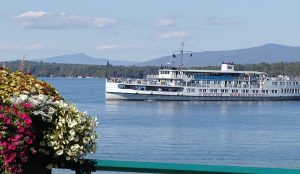When you think of Gran Canaria, you may be picturing year-round sunny skies and warm beaches. Or, you may be picturing volcanic hills and interesting birdlife. What many people forget, though, is how stunning the island is at nighttime. Gran Canaria remains one of the best spots in Europe for observing celestial formations.
Why Gran Canaria is Ideal for Stargazing
Gran Canaria’s geographical location and climate create perfect conditions for stargazing. The island is close to the equator, meaning it has views of both northern and southern hemispheres’ constellations.
Its stable atmospheric conditions, with over 300 clear nights per year, makes it very reliable for catching stars and planets. If you do get interrupted by clouds (mostly in the north), the unique ‘Donkey’s Belly’ phenomenon occurs mainly from April to August. It acts as a natural light pollution barrier, enhancing stargazing conditions above 1500 metres.
As we will see below, most of the stargazing locations lay in the south, where there is less light pollution away from the capital. Villas in Maspalomas and nearby towns are a great choice because not only are there great views directly from the balconies, it’s a very short drive into the centre-south of the island, where there’s the lowest population density on the island.
Top Stargazing Locations in Gran Canaria
Roque Nublo: At 1,813 metres above sea level, this is an iconic rock formation that has a 360-degree view of the sky. This kind of altitude ensures minimal light pollution from below, meaning you’re guaranteed an unobstructed view of the stars.
Presa de Las Niñas: This water reservoir area is a flat, open space which is easy to access via car. With free camping amenities (barbecues and toilets), it makes it a good choice for an overnight stay. Though, you may need permission, so don’t turn up and wild camp.
Observatorio de Temisas: This is a professional observatory in Agüimes that opens to the public, though only on specific nights. It has state-of-the-art telescopes that you can use, as well as guided tours by expert astronomers. So, this is the place to go to learn and access top-tier equipment.
Roque Saucillo Astronomical Center: Located in Artenara, this purpose-built stargazing facility offers educational programmes and night sky tours. It’s situated in a protected dark sky area, making it ideal for astrophotography enthusiasts.
Tamadaba National Park: As the largest pine forest on the island, it provides a natural barrier against light pollution. The park offers multiple elevated viewpoints and camping facilities for overnight stays.
Best Times for Stargazing
While stargazing is possible year-round in Gran Canaria, many people believe the best period is from April to August when the ‘Donkey’s Belly’ phenomenon occurs. Summer offers later sunsets, but spring and autumn are less crowded. Consider the lunar cycle too, as a new moon provides the darkest skies for optimal viewing.
Conclusion
Gran Canaria’s stargazing conditions are quite special. For a European jurisdiction, they have an unmatched opportunity to see incredible constellations. It’s an island that has incredible year-round weather in the daytime, so it’s no surprise this translates to calm, cloudless skies at night.
Whether you choose to drive up a high mountain peak or simply stroll down a secluded beach in the south, the island knows how to deliver reliably for night sky enthusiasts.







